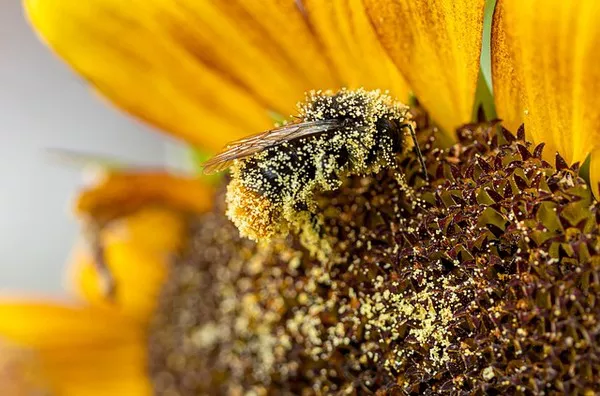Hummingbirds, often referred to as nature’s jewels, are captivating creatures that have fascinated humans for centuries with their vibrant colors, incredible agility, and unique hovering ability. These tiny birds, belonging to the Trochilidae family, are renowned for their swift and darting flight patterns, which make them a delightful sight to behold in any garden or natural setting. One of the most effective ways to invite these enchanting visitors into our midst is by cultivating a garden adorned with flowers that naturally attract hummingbirds. In this article, we will explore the intricate relationship between flowers and hummingbirds, delving into the characteristics that make certain blooms irresistible to these magnificent avian wonders.
The Symbiotic Relationship: Flowers and Hummingbirds
The relationship between flowers and hummingbirds is a classic example of mutualism—a symbiotic interaction in which both species benefit. Flowers, with their vibrant colors and sweet nectar, serve as a vital food source for hummingbirds, providing them with the necessary energy to sustain their incredibly active lifestyles. Simultaneously, hummingbirds play a crucial role in pollinating flowers as they move from blossom to blossom in search of nectar. This mutualistic bond underscores the importance of preserving and cultivating habitats that cater to both these remarkable birds and the flora they depend upon.
Floral Characteristics that Attract Hummingbirds
Hummingbirds have specific preferences when it comes to the flowers they visit. Several key floral characteristics make certain blooms particularly appealing to these birds:
1.Bright Colors: Hummingbirds are attracted to vibrant, bold colors, especially shades of red, orange, and pink. These hues stand out against the green backdrop of foliage, catching the birds’ attention from a distance.
2. Tubular Shape: Flowers with tubular shapes are well-suited for hummingbirds. The elongated structure allows these birds to insert their long bills and tongues to reach deep into the flower to access the nectar.
3. Abundant Nectar: Nectar is the primary fuel for hummingbirds, so flowers with a high nectar content are particularly alluring. Flowers that produce a steady supply of nectar are more likely to become hummingbird hotspots.
4. Scent: While hummingbirds primarily rely on visual cues, some studies suggest that certain species do have a limited sense of smell. Fragrant flowers could potentially enhance the appeal of a garden to these birds.
5. Blooming Patterns: Flowers that bloom in succession or continuously provide a reliable food source for hummingbirds. These birds are more likely to return to gardens where they can find sustenance throughout the seasons.
Top Flowers that Attract Hummingbirds
Several flower species have proven to be especially effective at attracting hummingbirds. Gardeners seeking to create a hummingbird-friendly haven should consider incorporating the following blooms:
Trumpet Vine (Campsis radicans): Known for its trumpet-shaped, fiery orange-red flowers, the trumpet vine is a favorite among hummingbirds. Its vibrant colors and abundant nectar make it a magnet for these birds.
Bee Balm (_Monarda spp.): With its unique spiky appearance and a spectrum of colors including red, pink, and purple, bee balm is a hummingbird haven. Its tubular flowers provide easy access to nectar, and it’s a great addition to any hummingbird garden.
Scarlet Sage (Salvia coccinea): This annual flower features clusters of bright red tubular blooms that hummingbirds find irresistible. Its long flowering period ensures a steady supply of nectar.
Fuchsia (_Fuchsia spp.): Fuchsia’s pendulous, tubular flowers are often bi-colored, creating an appealing visual contrast. Their elegant appearance and nectar-rich blossoms are a hummingbird favorite.
Honeysuckle (_Lonicera spp.): Honeysuckle vines produce sweetly scented, tubular flowers that hummingbirds adore. They come in various colors, including shades of red, orange, and yellow.
Columbine (_Aquilegia spp.): Columbine’s distinctive spurred flowers, often in shades of red and pink, are designed to attract hummingbirds. They are particularly drawn to the nectar deep within these blooms.
Lupine (_Lupinus spp.): Lupines produce tall spikes of vibrant flowers that range from blues and purples to pinks and reds. Their shape and color diversity make them a desirable option for hummingbird gardens.
Bleeding Heart (_Dicentra spp.): Bleeding heart’s unique heart-shaped flowers, often pink or white in color, offer a charming allure to hummingbirds. Its pendulous blooms are a captivating sight in any garden.
Creating a Hummingbird-Friendly Habitat
Designing a garden that welcomes hummingbirds involves more than just selecting the right flowers. Here are some additional tips to create a hospitable habitat:
Provide Shelter: Hummingbirds need perches for resting and observing their territory. Incorporate small shrubs and trees into your garden to offer these resting spots.
Water Source: A shallow water feature, such as a birdbath with a gentle mist or dripping water, can attract hummingbirds for both hydration and bathing.
Avoid Pesticides: Chemical pesticides can harm hummingbirds indirectly by contaminating the nectar they feed on. Opt for natural pest control methods to maintain a healthy garden.
Continuous Blooms: Aim for a mix of flowers that bloom at different times throughout the growing season. This ensures a consistent nectar supply, encouraging hummingbirds to return regularly.
Conclusion
Attracting hummingbirds to your garden is a rewarding endeavor that not only brings the joy of observing these captivating creatures up close but also contributes to the delicate balance of ecosystems through pollination. By selecting a variety of flowers with the right characteristics and creating a welcoming habitat, you can transform your outdoor space into a haven for hummingbirds—a place where nature’s beauty and these mesmerizing birds converge in a dance of color, sound, and grace.


